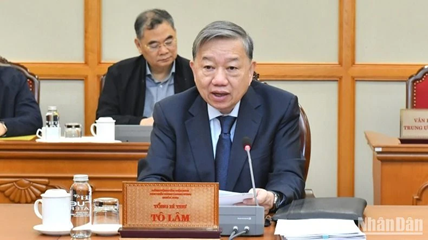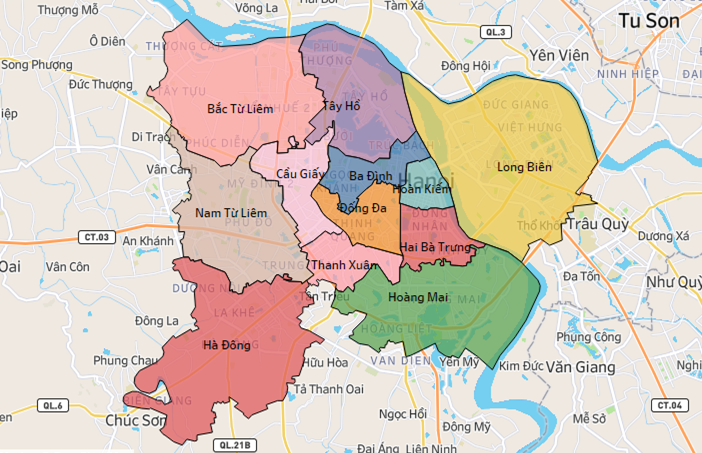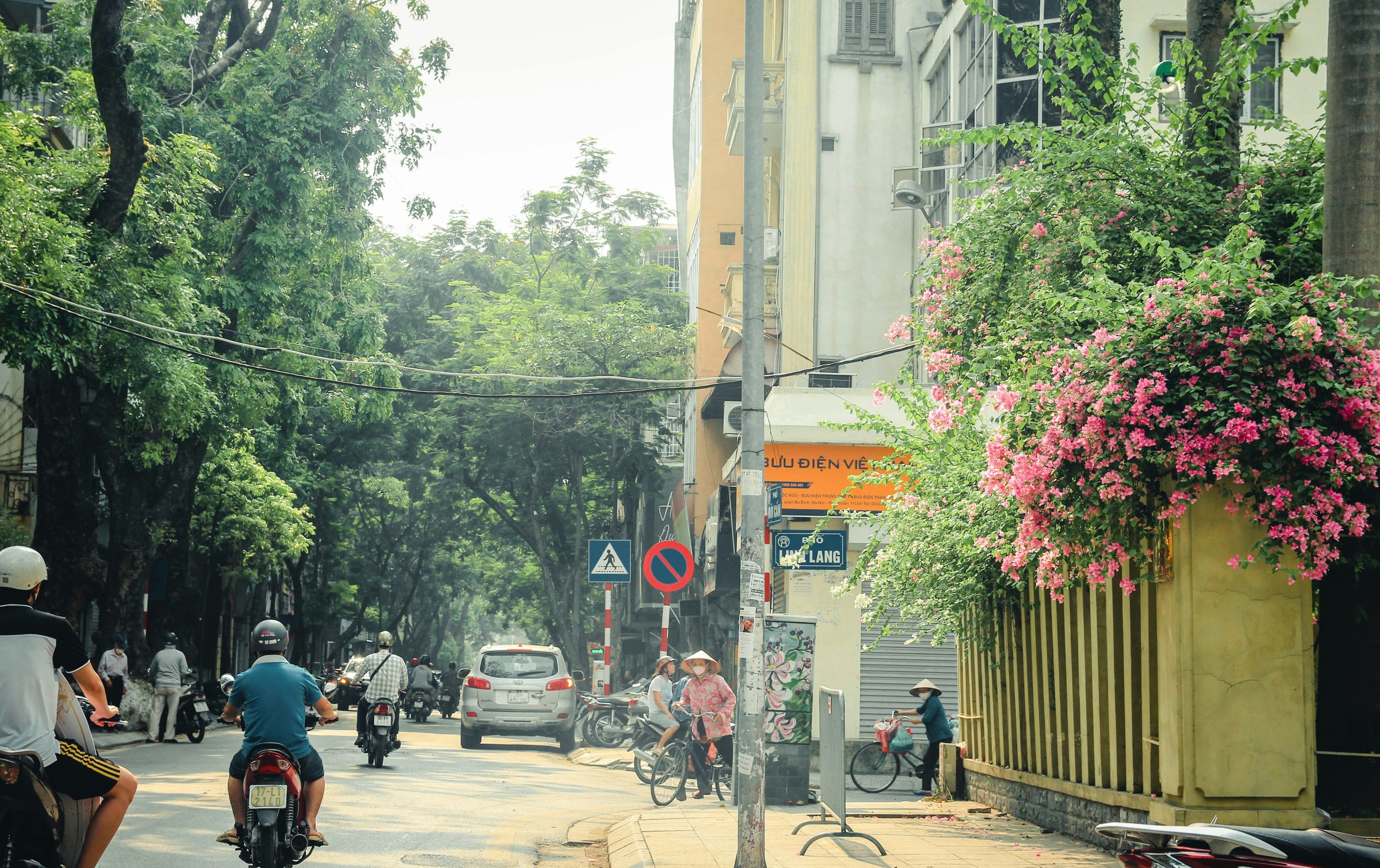
22Apr2025
Latest News & Report / Vietnam Briefing
Comments: No Comments.
The restructuring of provincial-level administrative units and the implementation of a two-tier local governance system in Vietnam represent a significant overhaul of the country’s administrative framework, aimed at enhancing governance efficiency and accountability.
The need for restructuring of provincial-level administrative units
Since its reunification, Vietnam has undergone several phases of administrative restructuring to better align governance with socio-economic development goals. In 1975, the country had approximately 72 provincial-level administrative units, which were consolidated into just 38 units in 1976 to centralize administration and improve efficiency[1]. However, in the following decades, Vietnam adopted a more decentralized approach to foster regional development. This led to the gradual re-establishment and separation of provinces, increasing the number to 53 by 1991, 61 by 1997, 64 by 2003, and eventually 63 by 2008 – a figure that remains today following the expansion of Hanoi City[2].
Throughout this period, Vietnam maintained its three-tier administrative structure – provinces and centrally-governed cities, districts, and communes or wards. This model ensured consistent government control and oversight across regions. Yet, rapid expansion and the creation of new administrative units also led to issues of fragmentation, inefficiency, and failure to meet national standards[3] [4]. These challenges prompted policymakers to reassess the structure of the public administration system.
In response, the Sixth Plenum of the 12th Central Committee issued Resolution No. 18-NQ/TW in 2017[5], calling for a comprehensive reform of the political system’s organizational structure. The resolution emphasized the need to streamline governance by reducing overlapping units, minimizing intermediary levels, and consolidating functions for greater effectiveness and efficiency. Building on this momentum, the 13th Central Committee adopted Conclusion No. 121-KL/TW in 2025[6], reaffirming the objectives of Resolution 18 and approving a nationwide administrative overhaul.
General Secretary To Lam at the second meeting of the Central Committee on the review of the implementation of Resolution No. 18-NQ/TW dated January 21, 2025
Source: Nhan Dan
Plan for Restructuring of Provincial-Level Administrative Units and Implementation of a Two-tier Local Governance System
After multiple discussion since early 2025, on April 12, Vietnam’s 13th Party Central Committee approved the proposal on the reorganization of administrative units and the development of a two-tier governance system locally, as outlined under Resolution No. 60-NG/TW of the 11th Conference of the 13th Party Central Committee[7].
Resolution No. 60-NG/TW highlights that 11 provinces and centrally-governed cities will remain unchanged. On the other hand, 52 provinces and centrally-governed cities, together with around 9,996 commune-level units, will be merged. As a result, the country will only have:
– 34 provincial-level administrative units (down from 63 units);
– Complete removal of district-level administrative units (down from 695 units); and
– Reduction of 60% to 70% of commune-level units (down from 10,035 units)
Decision No. 759/QD-TTg, signed on April 14th, provides a detailed proposal on the restructuring, with key information on the merging of provinces and cities, as well as the newly established administrative units. Following this Decision, Plan No. 47-KH/BCD[8] provides implementation guidelines for the consolidation process and the streamlining of governance structures. According to the plan, the new commune-level administrative units will begin operations by August 15, while the new provincial-level units will become operational by September 15.
Vietnam’s Provinces after Restructuring
Source: B&Company Vietnam
Overall, most provinces that do not meet the national standards under Resolution 1211/2016/UBTVQH13, supplemented by Resolution 27/2022/UBTVQH15 are merged based on (1) Natural Area; (2) Population size; (3) History, Traditions, Culture, and Ethnicity; (4) Geo-Economic factors; (5) Geopolitical factors; and (6) National Defense and Security. Cao Bang remains the only province failing to meet the national standards due to its geo-economic factors not suitable for merging with nearby provinces.
Socio-Economic Indicators of new provinces in 2024
| 6 Centrally-Governed Cities | |||
| No. | Provinces/Cities | Population (Thousand people) | Total Area (Km2) |
| 1 | Hanoi City | 8,718 | 3,360 |
| 2 | Hue City | 1,236 | 4,947 |
| 3 | Ho Chi Minh City | 13,609 | 6,773 |
| 4 | Hai Phong City | 4,103 | 3,195 |
| 5 | Da Nang City | 2,819 | 11,860 |
| 6 | Can Tho City | 3,207 | 6,361 |
| 28 Provinces | |||
| No. | Provinces/Cities (Tentative) | Population (Thousand people) | Total Area (Km2) |
| 7 | Lai Chau | 496 | 9,069 |
| 8 | Dien Bien | 657 | 9,540 |
| 9 | Son La | 1,331 | 14,110 |
| 10 | Lang Son | 814 | 8,310 |
| 11 | Quang Ninh | 1,397 | 6,208 |
| 12 | Thanh Hoa | 3,764 | 11,115 |
| 13 | Nghe An | 3,442 | 16,487 |
| 14 | Ha Tinh | 1,330 | 5,994 |
| 15 | Cao Bang | 559 | 6,700 |
| 16 | Tuyen Quang | 1,731 | 13,796 |
| 17 | Lao Cai | 1,657 | 13,257 |
| 18 | Thai Nguyen | 1,695 | 8,375 |
| 19 | Phu Tho | 3,664 | 9,361 |
| 20 | Bac Ninh | 3,509 | 4,719 |
| 21 | Hung Yen | 3,208 | 2,515 |
| 22 | Ninh Binh | 3,819 | 3,943 |
| 23 | Quang Tri | 1,584 | 12,700 |
| 24 | Quang Ngai | 1,862 | 14,833 |
| 25 | Gia Lai | 3,153 | 21,577 |
| 26 | Khanh Hoa | 1,882 | 8,556 |
| 27 | Lam Dong | 3,324 | 24,233 |
| 28 | Dak Lak | 2,831 | 18,096 |
| 29 | Dong Nai | 4,428 | 12,737 |
| 30 | Tay Ninh | 2,959 | 8,537 |
| 31 | Vinh Long | 3,367 | 6,296 |
| 32 | Dong Thap | 3,397 | 5,939 |
| 33 | Ca Mau | 2,141 | 7,942 |
| 34 | An Giang | 3,679 | 9,889 |
Source: Resolution No. 60-NQ/TW, Decision No. 759/QD-TTg, General Statistic Offices (GSO), Provincial Statistics Offices, B&Company synthesis
Decision No. 759/QD-TTg also results in the abolishment of district-level administrative units, and the consolidation of commune-level administrative units into a Two-tier Local Governance System:
– The provincial-administrative units, including provinces and centrally-governed cities, act as the primary authority overseeing commune-level governance. They issue resolutions, decisions, and directives to guide, manage, and supervise lower-level operations within their jurisdiction.
– The commune-level administrative units, comprising communes, wards, and special zones, function as the executive tier responsible for implementing policies with a degree of autonomy. Their operations align with the legal and policy frameworks established by the central and provincial governments. Additionally, commune-level governments manage local socio-economic development and are accountable to their respective provincial authorities.
Opportunities and challenges
Vietnam’s recent governance reforms carry significant positive implications for the business environment, particularly in streamlining administrative procedures and setting clearer development directions for the future. The consolidation of provincial- and commune-level administrative units helps eliminate overlapping responsibilities and reduce bureaucratic redundancy. This restructuring fosters more transparent reporting lines and enables more responsive and efficient governance. Importantly, the merging of administrative units leads to the creation of larger and more viable economic zones, enhancing their appeal to infrastructure and industrial investment. Aligning provinces with similar economic strengths also allows for better coordination in regional development strategies, helping to amplify competitive advantages and growth potential across regions.
However, businesses should be mindful of several potential challenges. While urban areas are generally well-positioned to adopt the new two-tier governance model, rural regions may struggle with the transition, potentially leading to uneven implementation. Local resistance to mergers or structural changes may also impact operations, especially in areas like land acquisition, public engagement, and workforce management. Additionally, administrative delays during the transition period could result in slower business approvals and interruptions in project timelines.
Conclusion
Vietnam’s efforts to restructure its provincial administrative units and pilot a two-tier local governance system mark a significant shift toward a more modern, efficient, and decentralized public administration model. These changes are expected to enhance service delivery, improve investment conditions, and better align local development with national priorities.
[1] VnExpress. Historical Mergers and Separations of Provinces and Cities in Vietnam <Source>
[2] TVPL. Resolution No. 15/2008/QH12 adjusting administrative boundaries of Hanoi city and related provinces <Source>
[3] TVPL. Resolution No. 1211/2016/UBTVQH13 on the Standards and Classification of Administrative Units <Source>
[4] TVPL. Resolution No. 27/2022/UBTVQH15 amending Resolution No. 1211/2016/UBTVQH13 on the Standards and Classification of Administrative Units <Source>
[5] Resolution No. 18-NQ/TW of the Sixth Plenum of the 12th Central Executive Committee on certain issues regarding the continued reform and reorganization of the political system’s organizational structure toward streamlined, efficient, and effective operations <Source>
[6] Conclusion No. 121-KL/TW on the review of Resolution No. 18-NQ/TW of the Sixth Plenum of the 12th Central Executive Committee <Source>
[7] Government Documents. Resolution No. 60-NG/TW of the 11th Conference of the 13th Party Central Committee <Source>
[8] TVPL. Plan No. 47-KH/BCD on the Implementation of the Restructuring and Merging of Provincial and Communal Administrative Units, and the Organization of a Two-Tier Local Governance System <Source>
* If you wish to quote any information from this article, please kindly cite the source along with the link to the original article to respect copyright.
| B&Company
The first Japanese company specializing in market research in Vietnam since 2008. We provide a wide range of services including industry reports, industry interviews, consumer surveys, business matching. Additionally, we have recently developed a database of over 900,000 companies in Vietnam, which can be used to search for partners and analyze the market. Please do not hesitate to contact us if you have any queries. info@b-company.jp + (84) 28 3910 3913 |









































